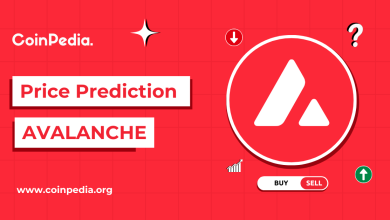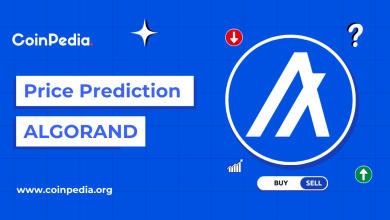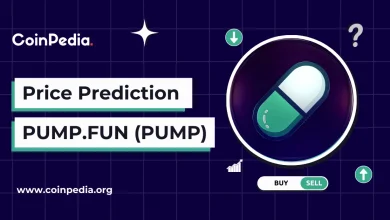
Story Highlights
- The live price of the CFX crypto is $ N/A.
- Conflux price could reach a high of $0.35 in 2025.
- This altcoin with a potential surge, may reach a high of $1.75 by 2030.
The Conflux Network is a public “Layer-1” blockchain and was created to power the Decentralized Applications (dApps) and Web3 infrastructure. With a prime goal of being sustainable, scalable, decentralized, and secure, this project has gained significant attention from the market.
It is based on the Tree-Graph consensus mechanism and a combination of Proof-of-Work (PoW), and Proof-of-Stake (PoS) algorithms. This makes it easier to transfer valuable assets quickly, effectively, congestion-free, and low fees.
Planning on investing in this crypto project but concerned about its prospects? Further, concerned with questions like “Is CFX a good coin?” and “Is this the right time to buy Conflux?” Fear not and scroll down to uncover the Conflux price prediction 2025, 2026 – 2030.
Table of contents
Overview
| Cryptocurrency | N/A |
| Token | N/A |
| Price | $ N/A NA |
| Market cap | $ N/A |
| Circulating Supply | N/A |
| Trading Volume | $ N/A |
| All-time high | $1.70 on 27th March 2021 |
| All-time low | $0.02191 on 01st January 2023 |
Conflux Price Prediction 2025
The ecosystem has seen strong growth, especially after its major project: a cross-border digital yuan pilot. Partnering with fintech firm AnchorX and Eastcompeace Technology, Conflux aims to launch an offshore RMB stablecoin to support countries in the Belt and Road Initiative, such as Singapore, Indonesia, Malaysia, and Kazakhstan.
Successively, another major milestone is the upcoming Conflux 3.0 upgrade, also called the Tree-Graph upgrade is set for launch in August. With this, the CFX coin could break out of its important resistance level and conclude the year with a high of $0.35.
However, unfavorable events or a potential market crash could pull the price to $0.13. Nevertheless, limited by the linear price forecasts, the average cost might land at $0.24 for the year 2025.
| Year | Potential Low | Potential Average | Potential High |
| 2025 | $0.13 | $0.24 | $0.35 |
Also read, Ethereum Price Prediction 2025, 2026 – 2030!
CFX Price Prediction 2026 – 2030
| Year | Potential Low ($) | Potential Average ($) | Potential High ($) |
| 2026 | 0.17 | 0.32 | 0.47 |
| 2027 | 0.22 | 0.42 | 0.62 |
| 2028 | 0.28 | 0.59 | 0.91 |
| 2029 | 0.36 | 0.82 | 1.29 |
| 2030 | 0.47 | 1.10 | 1.75 |
Conflux Cryptocurrency Forecast 2026
The price targets of CFX for the year 2026 could range between $0.17 to $0.47, with an average trading price of around $0.32.
CFX Price Prediction 2027
Looking forward to 2027, the Conflux crypto can make a potential high of $0.62, with a potential low of $0.22, and an average price of $0.42.
Conflux Crypto Price Target 2028
By 2028, forecasts indicate a potential low of $0.28 and a high of $0.91, with an average price projected at $0.59.
CFX Price Analysis 2029
During 2029, the anticipated price of Conflux could range between $0.36 to $1.29, with an average price of $0.82.
Conflux Price Prediction 2030
By 2030, Conflux (CFX) is projected to touch its lowest price at $0.47, with a high of $1.75, and an average price of around $1.10.
Market Analysis
| Firm Name | 2025 | 2026 | 2030 |
| Wallet Investor | $0.158 | $0.167 | – |
| priceprediction.net | $0.367 | $0.547 | $2.66 |
| DigitalCoinPrice | $0.41 | $0.56 | $1.18 |
CoinPedia’s Conflux Price Projection
The altcoin has been constantly trading under a bullish influence, highlighting a positive outlook in the long-term perspective. As per CoinPedia’s Conflux Price Prediction, if the bulls regain power, the altcoin could 2025 with a high of $0.35.
Conversely, a bearish action could pull the CFX price toward its low of $0.13. With this, the average price could settle at around $0.24.
| Year | Potential Low | Potential Average | Potential High |
| 2025 | $0.13 | $0.24 | $0.35 |
Also Read, Solana Price Prediction 2025, 2026 – 2030!
FAQs
This is a native cryptocurrency of Conflux Network. It is used for transaction fees, staking, and for governance voting within its ecosystem.
The price targets of the Conflux crypto token for 2028 range between $0.28 and $0.91.
Considering its historic market sentiments and social sentiments, this project has a bright future in the market.
With a potential surge, this altcoin may record a high of $0.35 in 2025.
Reportedly, the CFX token has an All-time High of $1.70.
By 2030, this altcoin is anticipated to range between $0.47 and $1.75.
Disclaimer and Risk Warning
The price predictions in this article are based on the author's personal analysis and opinions. CoinPedia does not endorse or guarantee these views. Investors should conduct independent research before making any financial decisions.







